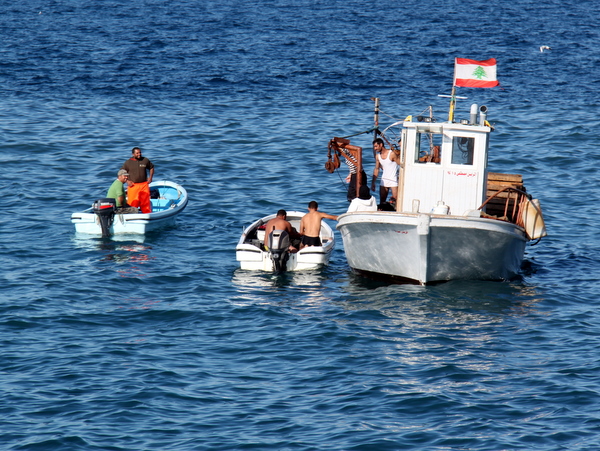I love the guy in the white vest and shorts. I bet he has a moustache. It was a lot warmer a couple of weeks ago when I took this shot. Looking at it now makes me shiver.
A mezze just for me?
I love having visitors here. It’s a wonderful thing to share Lebanon with them, especially when they are first-time visitors with so many surprises in store. Apart from helping them discover a fantastic new country, I also enjoy the whiff of a former home they bring with them.
It has been over ten years since I left the UK, so although I stick out like a sore thumb here, I don’t feel especially English any more either. When I went to university, got my first full-time job, filed my first tax form, and even spent three months on the dole, it was all abroad.
But the last time visitors came over from England I was struck by just how like them I was. Observing their reactions and habits, I felt like I was looking at a mirror image of myself when I arrived in Lebanon. And one of the main areas where this stood out was at the table.
The Lebanese approach to meals is different in so many subtle ways. It’s not just the ingredients that differ. I was used to that before coming here. But it took longer to get used to eating dinner with a near-empty plate. Faced with a tantalising mezze of different dishes, polite Brit that I am, I served myself a plate with a little of everything and then set about eating what was on my plate. Note the possessive article.
But it gradually seeped into my consciousness that that’s not the way it’s done. For a start a great deal of mouthfuls go straight from dish to mouth, scooped up with bread or a fork for individual pieces like stuffed vine leaves. When it is occasionally put to use, the plate is just a brief pause on the way. Often on the way to someone else’s mouth.
Such communal eating means you don’t really have your own serving. For a long time I worried whether I was taking too much of this dish or that. You just can’t keep track of how much you’ve eaten when it trickles past you in that sneaky way. But that’s the beauty of the mezze. If the fried rikkakat run out you just order more. Instead of that very British concept of fairness and a proprietary view of MY serving, you have an insistence on sharing. Instead of working to finish your plate, people keep an eye on feeding each other, frequently passing dishes and telling their friends: “You’re not eating anything!” Which is rarely true.
This does mean that when your host directs a mountain of batenjane piled high on a fold of bread directly towards your mouth it is hard not to think about whether you might accidentally salivate on his fingers. The strict British rules on eating instruments (fork in the left hand only!) do have something going for them.
Recently I was invited to a new restaurant down by Saint George Marina which has pulled of a combination of the communal mezze and the individualist own dish. It’s called Zabad, meaning ‘foam’, as in white-tipped waves. What was interesting at Zabad was not only the unusual flavour combinations (arak and fennel, martini and cardamom as aperitifs) but the choice of presentation for the opening week. It was like an individual mezze for each diner. At least eight or nine plates were set in front of me in turn, each bearing a tiny but beautiful new course.
It was a novel mix of eastern and western approaches which reminded us of a restaurant we dined at a few years back in Paris, Liza. Only later did I find out that the Lebanese chef behind it opened several restaurants in Paris before Zabad (his first here in Lebanon) and worked at Liza too.
Though I’m still puzzled about the restaurant’s cutlery choices – where did the spork come from?
Disclaimer in case you were wondering: I don’t do “reviews” for Le Gray (but just fyi, Beirut is Back) or Zabad or anyone for that matter. Nothing links me to Zabad in any way.
Hard as nails
We thought we were quite brave going up in the cable car to Harissa with a baby. This tin bucket looks scarier.
These guys are just fearless.
And here’s what they are working on. The modern church behind the monument-chapel is said to have been designed as a cross between a cedar and a Phoenician ship.
I guess the upside is that they have an even better view than us.




